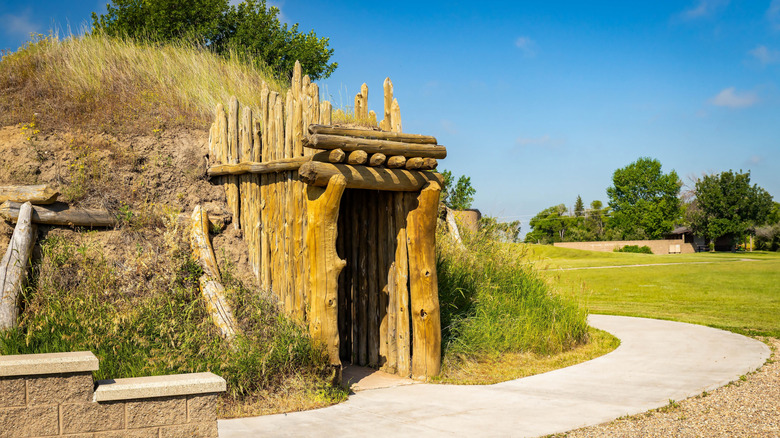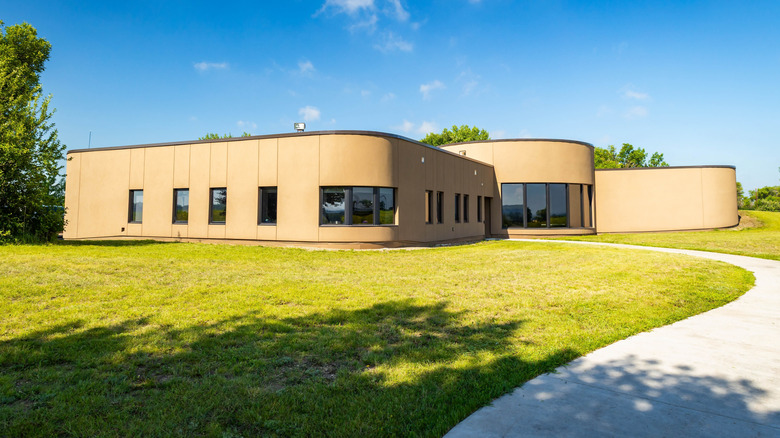This Riverside North Dakota Park Is A Historic Gem Filled With Breathtaking Gardens And Scenic Trails
Some places manage to feel like time capsules. The Montana town of Bannack, for example, offers a well-preserved ghost town of the Old West. North Dakota's Knife River Indian Villages National Historic Site pulls a similar feat, producing a historic gem filled with scenic trails and breathtaking gardens. Lovers of Native American history, Lewis and Clark, or any of the "-ologies" that make up natural history will find everything they need just past the visitor center's eagle-shaped entrance.
Congress created the park in 1974 to protect what little was left behind by the Hidatsa, a Native American tribe of farmers and traders who called the area home alongside many other tribes. The Hidatsa fled the area due to a smallpox outbreak in the 1800s, and the Knife River site and its artifacts were left in their stead at the park's museum. Just outside the museum rests a faithful reproduction of a Hidatsa garden and village, including an Earthlodge. The trademark wooden homes with a sod exterior insulation served as a sacred dwelling for the Hidatsa tribe, fitting up to 20 people. While there is one at the park, you can't rent it out for the night.
Accommodations will be hard to find nearby. You can stay overnight at several inns in Underwood, a small town about 40 minutes away. The area's winters can get extremely chilly, with temperatures dropping to -35 degrees Fahrenheit. Plan to visit during the shoulder season or summer to avoid the worst weather. Major travel hubs are hard to come by. Fargo, North Dakota's largest city, with its Hector International Airport, lies 259 miles away. Travelers hoping to visit the historic site will most likely have to fly to Bismarck, the park's closest commercial airport, which is about an hour's drive away.
Gardens and hiking at Knife River Indian Villages
The merging of the river valleys in North Dakota created an ideal agricultural environment, with wetlands, river bluffs, forests colliding, and endless miles of rolling prairie. The Hadatsa were renowned farmers, specializing in squash, beans, and corn — which were grown together using the "Three Sisters" planting technique. Women were the primary farmers and homemakers, carrying water in small bison bladders from the river. These gardens, bountiful as they were, disappeared with the Hidatsa. The explorers Lewis and Clark encountered the tribe's most famous member, Sacagawea, who helped the duo navigate their journey to the west. The National Historic Site has a reconstructed garden that visitors can use to understand the agricultural lifeline of those gardens.
Outside the park, you'll find the North Forest Trail, a 4.4-mile trek through the neighboring forest. To extend the trip, switch to the Missouri overlook loop, which leads to picturesque vistas and a bird's-eye view of the Missouri River. There's more fun with nature on the Two Rivers Trail, a 6.2-mile-long trek that leads to the intersection of the Knife and Missouri rivers. Those looking for a more historic perspective should head to the Village Trail, which takes visitors to the remnants of two Native American villages. After visiting the Knife River site, you can continue your adventures along the Missouri River at North Dakota's under-the-radar Cross Ranch State Park, about half an hour away, where you can paddle and fish.

